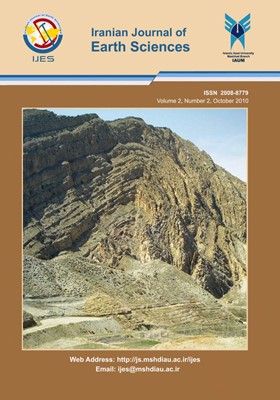Estimation of erosion and sediment yield of Ekbatan Dam drainage basin with EPM, using GIS
Subject Areas : MineralogyS. Amini 1 , B. Rafiei 2 , S. Khodabakhsh 3 , M. Heydari 4
1 - M.Sc student, Islamic Azad University, Khorasgan branch, Isfahan- Iran
2 - Dept. of Geology, Bu- Ali Sina University, Hamedan- Iran
3 - Dept. of Geology, Bu- Ali Sina University, Hamedan- Iran
4 - Dept. of Geology, Bu- Ali Sina University, Hamedan- Iran
Keywords:
Abstract :
Soil conservation and control of erosion is a basic problem in all countries. The goal of this research is to estimate erosion and sediment yield in Ekbatan Dam drainage basin by Erosion Potential Method (EPM), using Geographic Information System (GIS). The basin is located in Hamedan Province, west of Iran, in a cold and semi- arid region, with an average annual rainfall of 334mm. The study area is about 218 km2 and is divided into 8 sub- basins. Sub- basins 1 and 6 are the largest (49.14 km2), and smallest (9.92km2), respectively. Elevation ranges between 1960 to 3580 m. The litho-units include schist, granite, hornfels, limestone, sandstone, (Pre- Jurassic to Neogene in age), conglomerate, and recent alluvium. Most sediment in the basin is generated from erosion of schist. The main factors in the EPM (slope average percent, erosion, rock and soil erosion and land- use) were evaluated using GIS software. Data layers used in this study were created from topographic, homorain, homotemp, geology, lithology maps, landsat TM digital images, and field observations. According to calculated results, the coefficient of erosion and sediment yield (z) for this basin fall into moderate and heavy erosion classes. For avoiding soil erosion in this basin, therefore, soil conservation operations should be performed.


